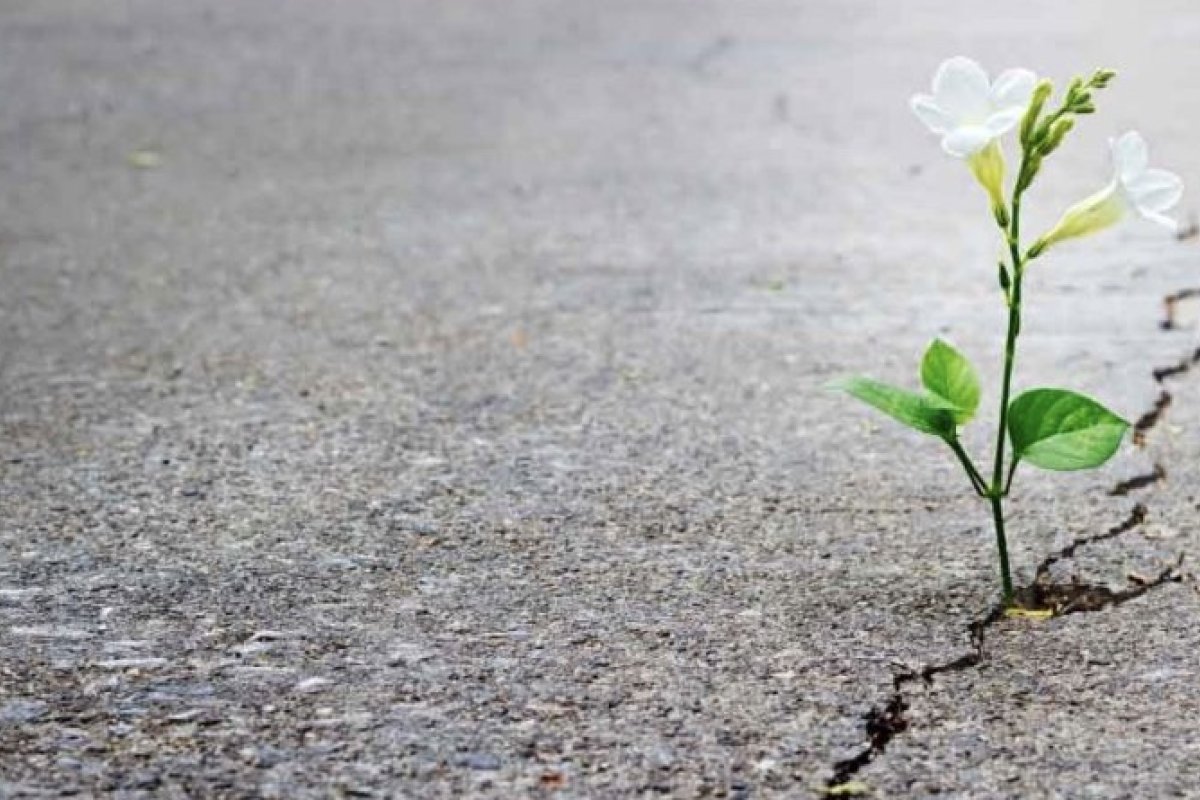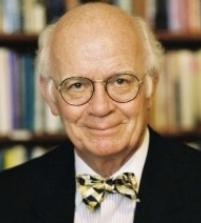
Searching for Hope
Martin Marty considers the place of hope in the realm of religion today.
“Sightings,” on which this column depends, are instances of seeing or catching sight of something, typically something unusual or rare, in this case, in the worlds of religion(s). Recently, I’ve been pursuing instances of “hope,” which, one would think, are usual and non-rare. But if you pay even marginal attention to media, politics, arts, and, yes, religion, you may have noticed the near disappearance or, one hopes, merely the eclipse of “hope” in our culture of prevalent hopelessness. Where do we “sight” or hear or sense the presence of hope in displays or discourse or common activities?
Our calling is to track a subject like this in religion. There, one might least expect the decline or abscondence of “hope.” Following the Apostle Paul’s First Letter to the Corinthians, Christian texts locate “hope” with “faith” and “love” as the three “abiding” phenomena which attract and measure all adherents. Compare the texts of various religions: Begin with Judaism, as notable rabbi Jonathan Sacks writes about “How the Jews Invented Hope” in his book Future Tense: Jews, Judaism, and Israel in the Twenty-first Century. Those who read it will learn what is distinctive in Judaism’s understandings of hope. Similarly, the Qur’an is rich in dealing with hope, in realistic contexts, as the article “Hope and Despair in the Qur’an,” on the popular website Why Islam?, suggests. And one can find similar-yet-distinct instances of “hopeful” thought in Buddhism as well as in other religions and faith communities around the globe.
The topic of “whatever happened to hope in religions” is of special interest in Western cultures, where it plays a key role in the many variations of Christianity. The stress on hope shifts with changing events in Catholicism, Orthodoxy, and Protestantism, and it depends significantly on the political and cultural context in which Christians find themselves, and the tone and accent changes with these ups and downs. Accent on “hope” is most emphatic in times and places where it is most needed, sought after, and welcomed: in times of droughts, wars, economic or political stress, to name a few. Needless to say, the presence or absence of talented prophets, poets, philosophers, and theologians also plays a major role.
Those who have read the prophets and the apostles of the Jewish and Christian faiths are aware of this. In the midst of ancient anti-hope cultural trends, Isaiah and Jeremiah and the threatened authors of the Gospels left latter-day believers with classical and enduring witnesses to the positive power of hope.
In Protestantism, the most concentrated attention to what was called “hope theology” in previous decades and a “theology of hope” more recently, appeared in cultures whose Christian faith was sourced beyond old Christendom in the middle of the twentieth century, which occurred predominately in Europe and the US. When the World Council of Churches was young, its Second Assembly—which met in Evanston, Illinois, in 1954—was devoted to “Christ the Hope of the World,” as societies and cultures were dealing with the memory and very real experience of hopelessness in the aftermath of World War II. Not long after the Assembly, the best-known individual work on the subject was published—Jürgen Moltmann’s Theology of Hope (1964). The German professor soon had company in his fellow countryman Wolfhart Pannenberg and the American superstar Harvey Cox, who saw fresh hope in the secular order.
Should there in fact be a recovery of “theologies of hope”—for which some hope again—it will likely be the case that Moltmann and related texts will be revisited and their themes updated. What is abundantly clear from those texts is that this hope had little to nothing to do with “optimism,” though there was plenty of that going around in those years. (Doggerel helped spell the difference: “The optimist fell ten stories. As he passed each window bar, he shouted in to his comrades, ‘It’s all right so far.’”) Instead, in the episode in which the “theology of hope” prospered, the accent was not on the immediate or, for that matter, on the longer past, but, instead, on the future.
Similarly, this vision of hope did not lead to passivity. Moltmann led others to stress that the theology of hope invites believers to take part in “worldly” activity. The hope theme is consistent in the ethic and preaching of Martin Luther King Jr., as well as in many agents of proclamation and action in feminist, Latin American, and black theologies. Those who profess hope and act upon it are aware that they cannot count on the same cultural support by majorities or large minorities that they could in decades past. But most do not spend their time indulging in nostalgia for “the good old days” or in cultural regression. They want to resurrect hope in word and action, in a world of nihilism, chaos, and passivism.
Most of them know that they profit from the witness of the proclaimers of hope through many centuries. At their best, proclaimers of hope urge again that fellow believers are to be impatient with the world as it is and active as participants in helping introduce, welcome, and bring about a new reality. The most quoted biblical passage on this theme by the “hoping” theologians was and remains Jeremiah 29:11: “For I know the plans I have for you, declares the Lord, plans for welfare and not for evil, to give you a future and a hope.” It shouldn’t be a surprise that this theology is heavy on eschatology, a vision of the “end” when suffering has been overcome. Yet, we past-minded historians had to relearn to rely on the promises of God to act in the future. “Hopers” in many faiths draw on significant precedents in their respective traditions to cultivate hope among their faithful, and for the “hope” theologians in Christianity, the accent on the future has led them to make much of Jesus Christ, the “resurrected one.”
“Hope” also reappears, against all cultural odds, as a significant theme in many versions of Roman Catholic thought and activity. In 2018, the Second International Congress of the European Society for Moral Philosophy chose as its theme “Is Hope Morally Good?” And in an interview on the subject, the president of the John Paul II Academy for Human Life and the Family, Josef Seifert, helped update Catholic thought on the theme of hope. He offered that “the human, moral, and ideological destructive forces at work in the European Union—aimed at constructing what some have called a ‘false Europe,’” were developing an “empty façade of European peace and happiness,’’ and that “cheap and superficial ideologies” were replacing true hope. He quoted philosopher Gabriel Marcel: “Hope [is] the stuff of which the soul of Europe is made.”
May it be that we all take a chance on learning more about how the “good stuff” of hope in every faith and place might be ensouled, enhanced, and put to work. Here’s hoping…
Sightings is edited by Joel Brown, a PhD Candidate in Religions in the Americas at the Divinity School, with assistance from Nathan Hardy, a PhD Candidate in the History of Christianity at the Divinity School. Sign up here to receive Sightings via email. You can also follow us on Facebook and Twitter.


